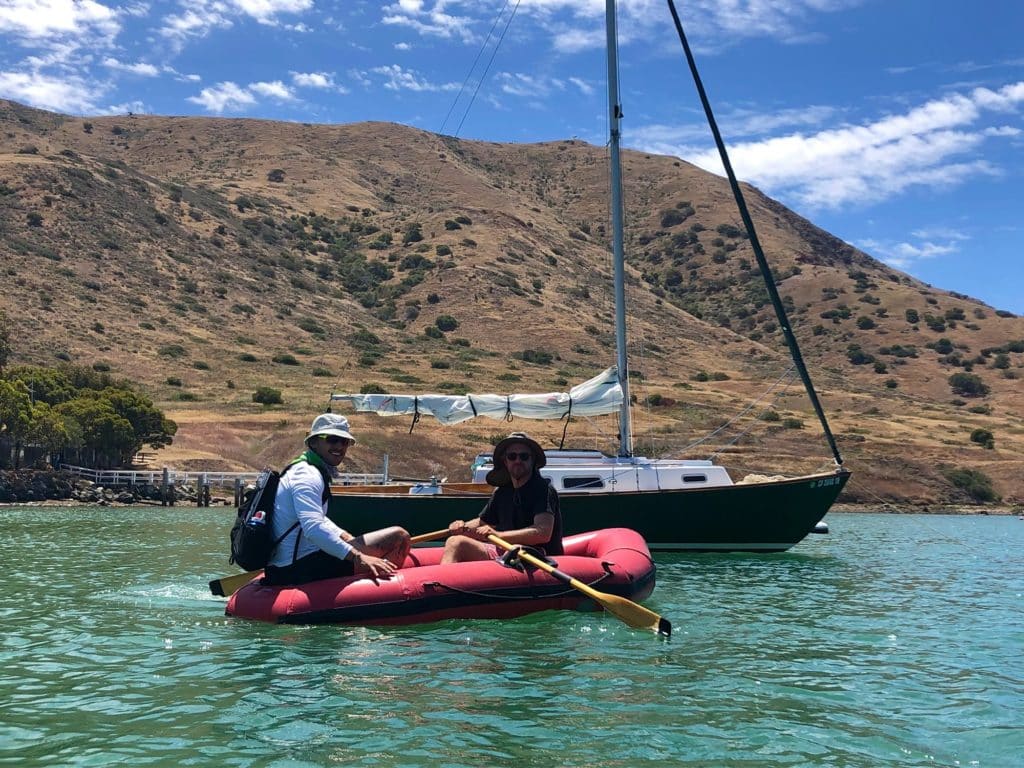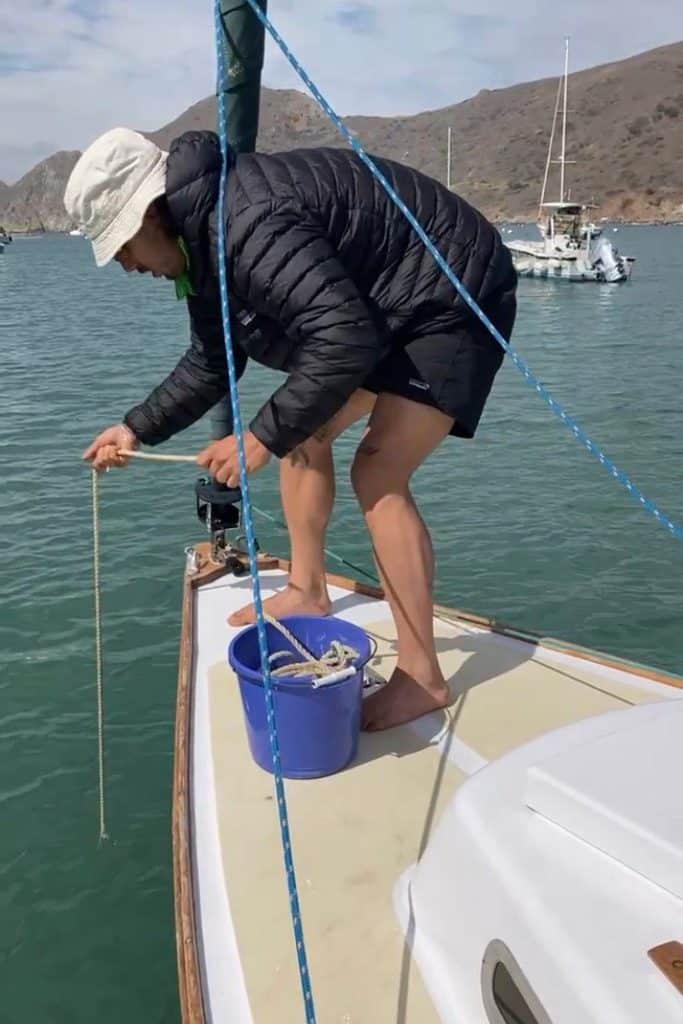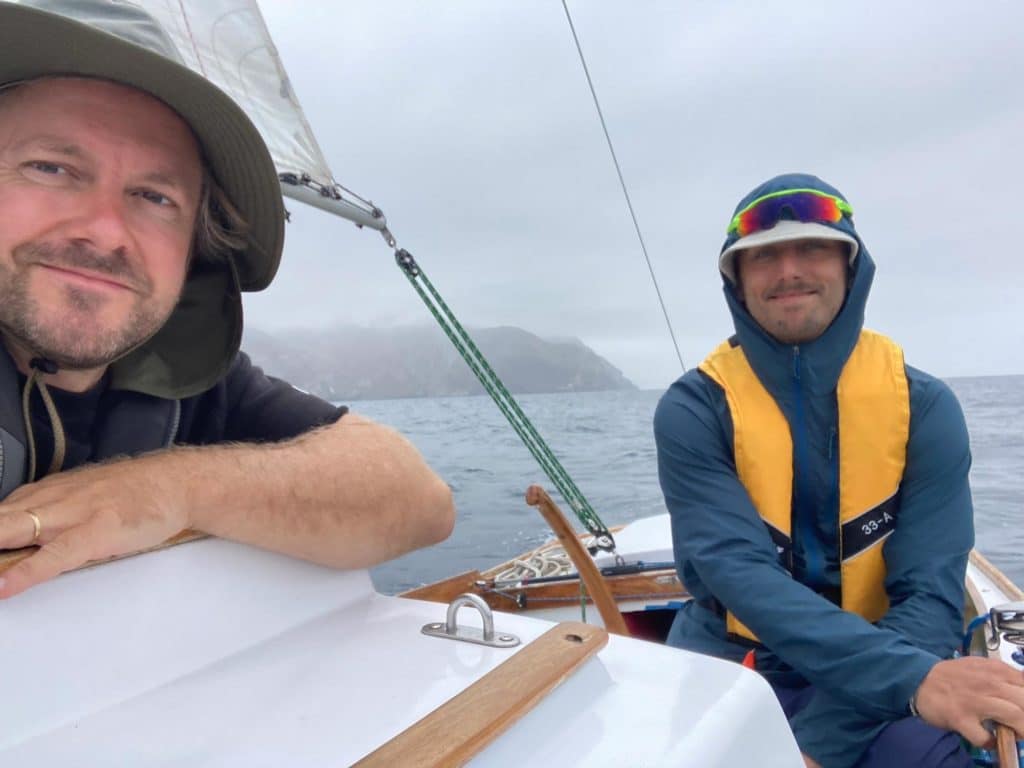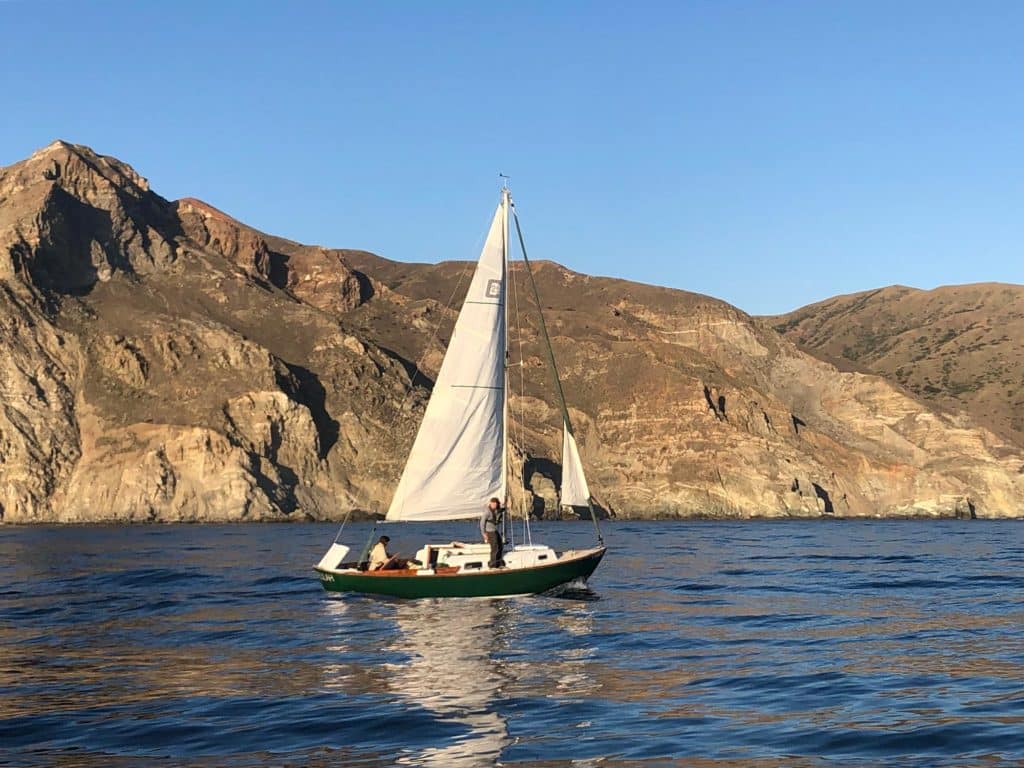
The trip is over. All is well. I almost slept.
After two nights at anchor on Catalina Island, I’ve got a bunch of photos that make me look way cooler than I am in actual life.
The sail over to the island was a breeze. On a clear, So-Cal morning, my pal Thaddeus and I motored out Santa Monica Bay, close hauled across the San Pedro Channel, then boomeranged around the back of Catalina Island. At sundown we slipped into Cat Harbor, found a cozy spot in ten feet of water, and dropped the hook.

After 18 months with my Cape Dory 25 Delilah, and more than 180 days on the water, it was my first time anchoring overnight. Shockingly, it was mostly a success. That first night, I closed my eyes, shut off my brain, and honest-to-god slept. But, on night two, things got wacky—or, at least I did.
Around midnight, after a couple hours of snoozing, I poked my head out of my sleep sack and nearly shat myself. The ten feet of water we’d started the night in was just five feet now. Over the next hour, I hemmed and hawed as the tide continued to fall, my imagination ran wild, and a small mental health crisis ensued, leaving me asking myself questions like: Does the Coast Guard perform rescues in knee deep water? Will the helicopter lower the basket if the evacuee can simply walk to shore? Does my tow boat membership include tele-therapy?
Move to deeper water or stay put? I debated but couldn’t decide. Anyway, by 3 a.m. I was a full-blown mess. I stood on the deck in my underwear, my white thighs aglow under the light of a full moon, mentally preparing for a long list of emergency scenarios that would never happen.
“I’m thinking we’re fine,” Thaddeus eventually said, after calmly weighing each of our options aloud with me. “Sometimes, there are no good choices. Sometimes the best move is to hold tight, stay observant and do nothing. But, I really do think you should put a shirt on.”
He was right. We weren’t dragging anchor. Delilah hadn’t gone aground. Truth was, the scariest thing happening was the moonlit silhouette of my softly round dad bod.
“Point taken,” I said. Thaddeus’ level-headedness was just what I needed, and I was grateful.

Back in Delilah’s cabin I put on a shirt, snapped a photo of the depth sounder at 3.6 feet, then climbed back in my sleeping bag. We never did go aground that night, and I didn’t sleep. Instead, I spent the rest of the night lying awake, chatting endlessly about my feelings (like real captains do), wondering what I could learn and how I might do things differently next time we anchor overnight. In the morning, the sun rose, and the tide lifted and brought my confidence up with it. After caffeinating, Thaddeus and I readied Delilah and began the 41-mile sail home to Marina Del Rey.
“Sorry about last night,” I told him. “I totally ruined a good night of sleep.”
“It’s alright. Honestly, I learned a lot about your personality,” he said.
Touché, bro. I learned something about me too.
You see, in recent months I’d read a good bit about ground tackle—about anchors, rope, chain and scope. But what I hadn’t considered was the strong mental game needed for overnight anchoring. One thing’s for sure, I’m going to need more confidence next time I “sleep” at anchor.
My ocean cruiser friend, James Frederick, tells me that confidence comes with experience.

“Starting out, I used to keep an iPad in the v-berth with Navionics running and checked it like 20 times a night,” he told me. “But, the anxiety completely disappears after anchoring for a while in various situations and high winds. Nowadays, I sit anchor watch for the first hour after anchoring, and then I rarely even think about it after that, even in 45 knots last week.”
The other thing I’m going to need is a stronger mental approach. Recently, Fatty Goodlander wrote about psychological crew management and how captains can keep a nervous crew calm by keeping them busy. “Get the mind off the blow. Focus on the everyday mundane, and the fearful what ifs lose their bite,” he wrote. “The difference between ordeal and adventure is attitude.”
So, yeah, I’ve got some work to do. With practice and a solid head-game, I’ll gain experience, build skills, and grow the mindset necessary to anchor overnight. Maybe I’ll sleep; Maybe I won’t. Only time will tell. But, the next time the tide falls and the moon rises, at least I’ll have my shirt on.
Click here to read more from The Noob Files
David Blake Fischer is a “noob” sailor living in Southern California whose work has appeared in McSweeney’s, BuzzFeed, the Moth, and Good Old Boat. He hasn’t crossed oceans. In fact, he’s only recently crossed the Santa Monica Bay. Follow him as he fumbles out the channel, backwinds his jib and sometimes drags his fenders on Delilah, his Cape Dory 25. Stalk him on Instagram.








